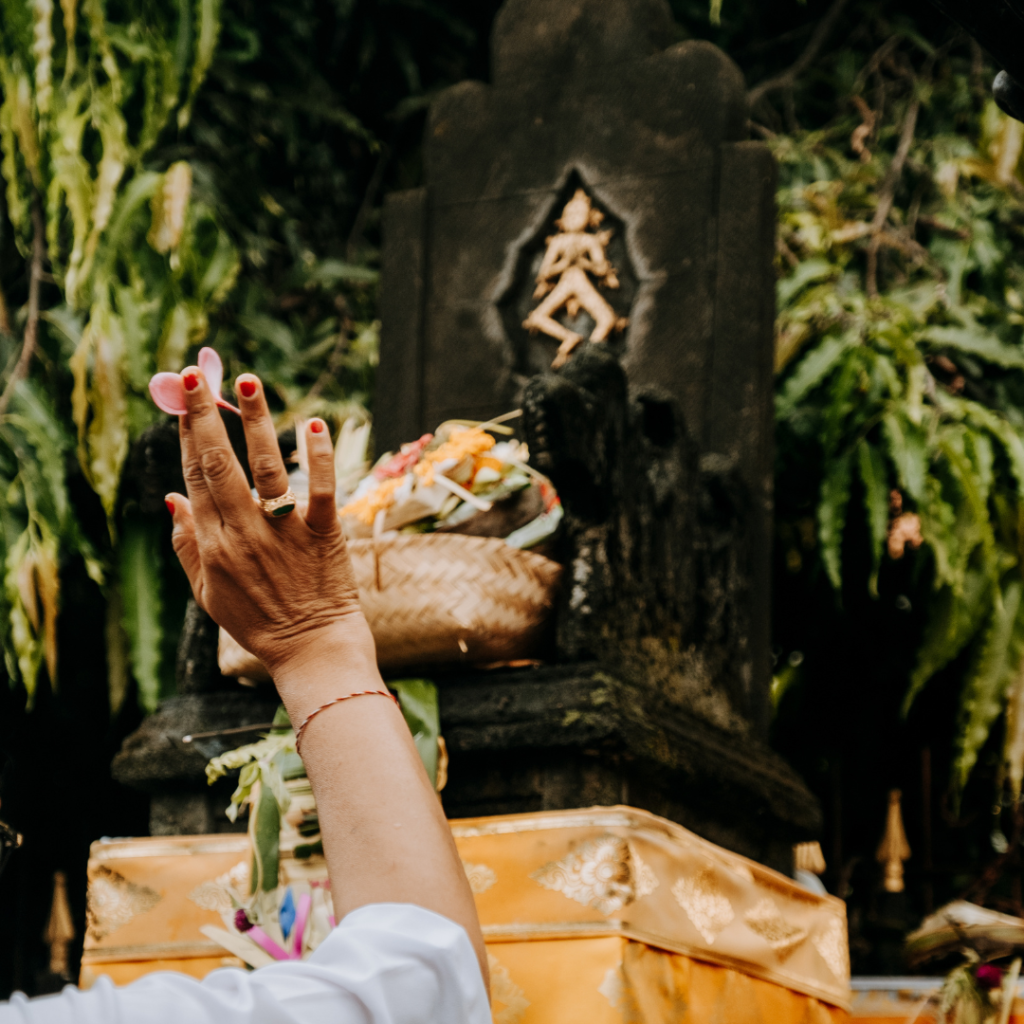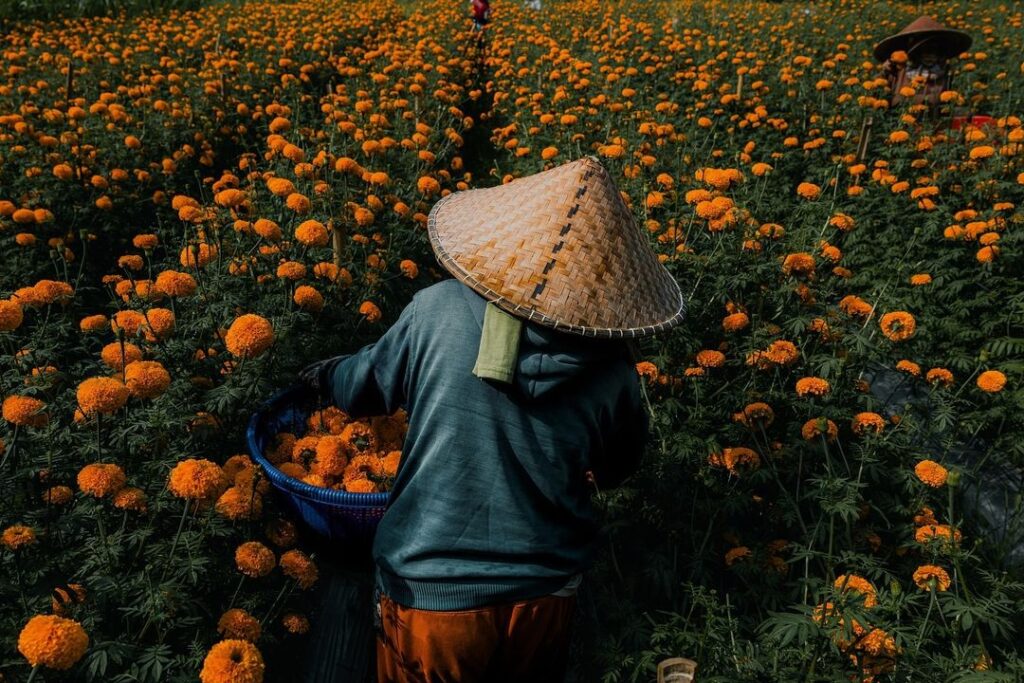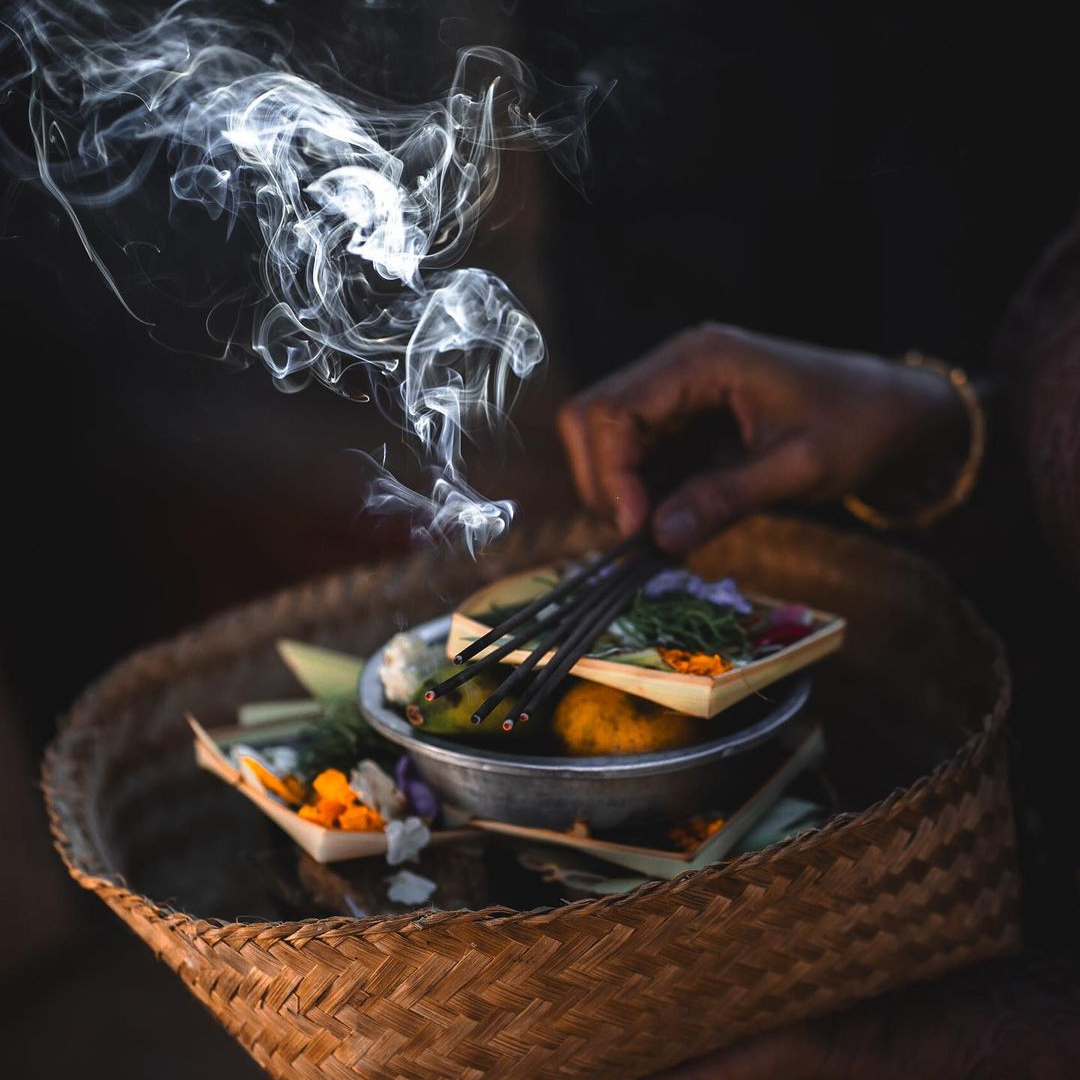Have you ever wondered about the colorful offerings you see adorning doorways and shrines throughout Bali?
Canang sari, these intricate baskets filled with flowers, incense, and other offerings, are a daily ritual in Balinese Hinduism, symbolizing gratitude and devotion. Let’s delve into the world of Canang sari and discover its cultural significance.
Canang sari is a simple yet profound daily offering in Balinese Hinduism, symbolizing gratitude, reverence, and the interconnectedness of all things.
This small, intricately crafted basket is filled with colorful flowers, incense, and other offerings, creating a vibrant and fragrant display.

(Photo by : Agung Parameswara)
Balinese Hindus believe that canang sari helps to maintain balance and harmony in the world, between humans, gods, and nature. It is seen as a way to appease the unseen forces and ensure peace and prosperity.
These offerings are a daily practice in Bali, used to honour the gods, spirits, and ancestors, and to maintain balance and harmony in the spiritual realm.
Canang sari are offered daily at homes, temples, and even on the streets. They are a common sight in Bali, adorning doorways, shrines, and public spaces.
The act of preparing and offering canang sari is a form of meditation and devotion for many Balinese people.

The Components of Canang Sari
A typical canang sari consists of several elements :
- Janur/Penjor : A woven tray made from palm leaves, symbolizing the earth and its bounty.
- Flowers : Colorful flowers, each with its own symbolic meaning, are arranged in the canang sari.
- Incense : Incense is used to purify the air and connect with the spiritual realm.
- Offerings : Other offerings may include rice, betel nut, and coins, representing various aspects of life and prosperity.
Cultural Significance
The preparation and offering of canang sari are deeply ingrained in Balinese culture. It is a tradition passed down through generations, reflecting the island’s rich spiritual heritage.
Witnessing the creation of canang sari provides a glimpse into the daily lives of Balinese people and their unwavering devotion to their faith.
While canang sari is primarily a religious offering, it also serves as a beautiful and artistic expression. The intricate designs and vibrant colors of the canang sari create a visual feast for the eyes.
In Balinese Hindu culture, marigold flowers hold significant importance. Known locally as “gemitir”, symbolize the divine and the sun.
Their bright yellow and orange colors are associated with the sun’s energy, representing light and life.

(Photo by : Felipe Ribeiro)
These vibrant hues also symbolize purity, sincerity, and the offering of one’s heart to the divine.
Marigolds are a staple in canang sari, the daily offerings placed in temples, homes, and businesses.
These small, woven palm leaf baskets contain flowers, rice, and other items, each representing different elements and deities. The bright and auspicious appearance of marigolds is essential in these offerings.
During ceremonies and festivals, marigolds are extensively used to decorate temples, shrines, and statues.
They add a festive and sacred ambiance to religious events, enhancing the spiritual atmosphere.
Marigolds are used in various rituals and ceremonies, such as weddings, funerals, and temple anniversaries.
They are often arranged in intricate patterns and garlands to honor the gods and ancestors.
Traditionally, marigolds are believed to have protective and healing properties. They are sometimes used in herbal remedies and placed in homes to ward off negative energies.
Marigolds are widely cultivated in Bali and are available year-round. Their durability and long-lasting nature make them ideal for use in offerings and decorations that need to withstand the tropical climate.
Marigold flowers are an integral part of Balinese Hindu offerings due to their rich symbolism, spiritual significance, and practical qualities.
They embody the essence of purity, sincerity, and divine light, playing a crucial role in maintaining the spiritual balance and harmony in Balinese daily life and religious practices.






What you’ve written here is not just insightful — it’s comforting. There’s a warmth to your words that makes the reader feel seen and understood, as though you’re sharing something deeply personal and valuable. This is the kind of writing that stays with you long after you’ve finished reading it.